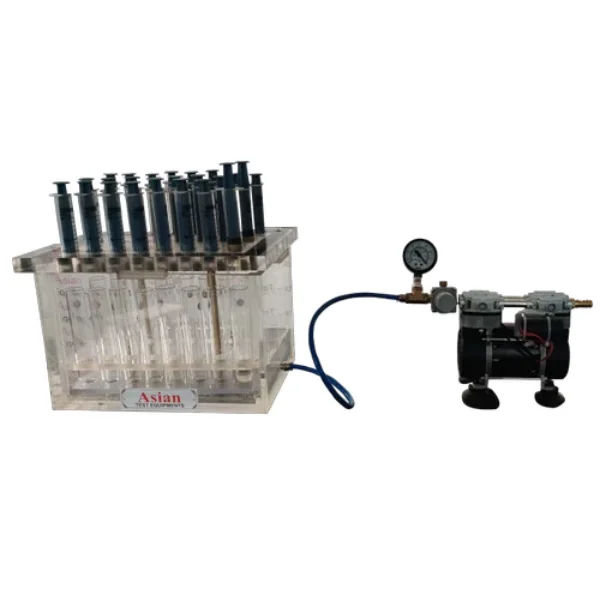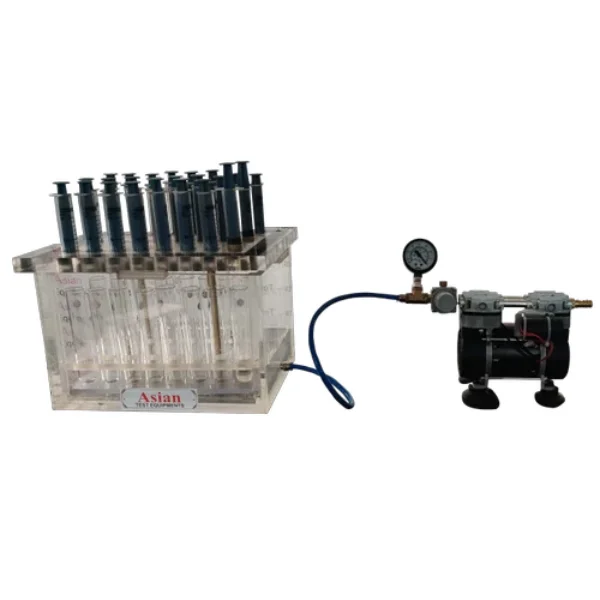
A Solid Phase Extraction (SPE) Unit is a laboratory instrument used for the separation and purification of analytes from a liquid sample. Solid-phase extraction is a sample preparation technique commonly employed in analytical chemistry, particularly in chromatography and mass spectrometry applications. The goal of SPE is to extract specific compounds or classes of compounds from complex sample matrices for subsequent analysis. Here are key features and aspects associated with a Solid Phase E....
A Solid Phase Extraction (SPE) Unit is a laboratory instrument used for the separation and purification of analytes from a liquid sample. Solid-phase extraction is a sample preparation technique commonly employed in analytical chemistry, particularly in chromatography and mass spectrometry applications. The goal of SPE is to extract specific compounds or classes of compounds from complex sample matrices for subsequent analysis.
Cartridge or Disk Format: SPE units often consist of a cartridge or disk filled with a solid-phase sorbent material. This sorbent selectively interacts with and retains the target analytes from the sample.
Sample Loading: The liquid sample containing the analytes of interest is loaded onto the SPE cartridge. The sample is typically passed through the sorbent bed, allowing the sorbent to capture the target compounds while impurities are washed away.
Sorbent Material: The choice of sorbent material is crucial and depends on the nature of the analytes and the sample matrix. Common sorbents include reversed-phase (RP), normal-phase (NP), ion-exchange, and mixed-mode sorbents.
Elution Process: After loading the sample, the analytes are retained on the sorbent bed. Elution involves passing a solvent or solvent mixture through the sorbent, selectively desorbing the analytes of interest for subsequent analysis.
Vacuum or Positive Pressure: SPE units may operate under vacuum or positive pressure, depending on the design. Vacuum extraction is common, where a vacuum pump is used to draw the liquid through the sorbent bed.
Automation: Some modern SPE units are automated, allowing for higher throughput and reduced manual intervention. Automated systems often include programmable controllers, multiple channels, and integrated elution processes.
Cartridge Size and Configuration: SPE cartridges come in various sizes and configurations to accommodate different sample volumes and applications. Common sizes include 1 mL, 3 mL, and 6 mL cartridges.
Applications: SPE is widely used in environmental analysis, pharmaceutical analysis, food and beverage testing, clinical research, and other fields where sample purification is critical for accurate analytical results.
Extraction Chemistry: The principles of SPE are based on the specific interactions between the analytes and the sorbent material. For example, reversed-phase sorbents are often used for hydrophobic analytes.
Versatility: SPE units are versatile and can be used for a wide range of analytes, including organic compounds, drugs, environmental pollutants, and more.
Quality Control: Laboratories use SPE as a critical step in sample preparation to ensure that interfering substances are removed, and the target analytes are concentrated for analysis, contributing to the accuracy and precision of analytical results.
Solid Phase Extraction is a powerful technique for sample cleanup and concentration, playing a crucial role in the preparation of samples for various analytical methods. The design and operation of an SPE unit may vary based on the specific needs and requirements of the analytical method and application.

Corrosion test chamber is a great laboratory test equipment widely used in metal...
Cyclic Corrosion Salt Spray Chamber manufactured by Sigma Machines – the world...
Sigma Machines CASS tester is designed keeping in mind the relevant tester stand...
Ensure the quality and durability of your materials with our reliable Double Hea...
SIGMA Machines is counted among the best salt spray chamber manufacturers in Ind...
Enhance your testing capabilities with our advanced digital pounding tester...
Enhance your foam testing process with our advanced PU foam Indentation Hardness...
Enhance your yarn quality control with our reliable and efficient yarn strength ...
Get accurate results with our Shear Fatigue Tester for PU Foam...
Ensure precise measurements of soft materials with our reliable thickness gauge...
Enhance your understanding of ball performance using our reliable Ball Resilienc...
Asian Water Absorption Tester is Water Resistance Tester For Sole Leather- (Perm...
Discover the ultimate laundry solution with Laundrometer Digital Model - the per...
Enhance your testing process with Test Template D and achieve accurate and relia...
Ensure the safety of children's toys with our reliable and efficient flammabilit...
The humidity test cabinet provides a sample with the humidity that the materials...
Ensure accurate results with our advanced Bundesmann Apparatus Tester for compre...
A Hot air oven is a great tool for manufacturers to accurately test materials i...
hydrostatic testing equipment used for testing lateral pipes is located within a...
Enhance belt quality control with our Belt Flex Tester, providing accurate and r...
Rockwell Hardness Tester models are suitable for accurately testing the hardness...
Martindale abrasion machine is suitable for testing the pilling degree and abras...
Adhesion Strength Tester serves the purpose of measuring the peelability or perm...
ASIAN Bursting Strength Tester Machine is especially useful for measuring the pa...
Achieve superior strength and resilience with our cutting-edge tensile strength ...
Enhance your quality control processes with our reliable Impact Tester, providin...
Ensure accurate measurements of your drapes' performance with our reliable Drape...
Glow Wire Test Equipment is an important testing equipment which is used in the ...
The heat distortion temperature of the polymer in the test is identified as the ...
Range: 2000 lbs with 1 lbs least count digital display Elongations: Up to 9...
Torque Tester for Bottle Caps is one of the important instruments to calculate t...
The “ASIAN” Universal testing machine provide a relatively inexpensive way...
Asian Melt Flow Index Tester helping evaluate the flow properties of melted plas...
Size of the Test Specimen: 40 X 15 mm Distance between edge of the Crease...
Box Compression Tester is used to measure the box compression strength (BCT), sh...
Enhance your material testing capabilities with the advanced Demattia Flex Teste...
Enhance your understanding of material properties with our Oscillating Disk Rheo...
Enhance your scientific experiments with our Specific Digital Gravity ...
Looking for an accurate and reliable IRHD Rubber Hardness Tester? Look no furthe...
Explore the world of direct reading specific gravity balance through our informa...
Enhance your testing efficiency and accuracy with our state-of-the-art universal...
Discover the Cone Calorimeter Tester: Enhance fire safety with accurate and reli...
Enhance your testing capabilities with a state-of-the-art dry sand abrasion test...
.jpg)
Get In Touch With Us
See How your Business Can benefit With
Sigma Machines
Get Estimated Quote
